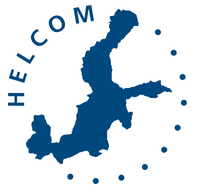Nine areas in the Baltic Sea described as Ecologically or Biologically Significant Marine Areas (EBSAs) according to the criteria of the Convention on Biological DiversityBaltic Sea joins 13 other marine areas in the world where regional EBSAs workshops have been held The Regional Workshop to Facilitate the Description of Ecologically or Biologically Significant Marine Areas (EBSAs) in the Baltic Sea was held on 20–24 February 2018, in Helsinki, Finland, hosted by the Government of Finland and with financial support by Finland and Sweden. The workshop was convened by the Secretariat of the Convention on Biological Diversity (CBD) in collaboration with HELCOM. Group picture from the opening of the workshop. Front middle row, from left: Ms. Hannele Pokka, Permanent Secretary, Ministry of the Environment of Finland; Ms. Penina Blankett, Ministerial Adviser, Ministry of the Environment of Finland; Ms. Monika Stankiewicz, HELCOM Executive Secretary; and Ms. Jihyun Lee, Environmental Affairs Officer, CBD Secretariat, together with the participants of the Baltic EBSA workshop. Photo: Florent Nicolas/HELCOMNine Baltic marine areas were described by the workshop participants as ecologically or biologically significant, including five transboundary areas covering waters of two or more countries. The described EBSAs extend into 14 of the 17 Baltic Sea sub-basins. Altogether, they cover 23% of the Baltic Sea, slightly higher than the 19% the average in other areas of the world.The described EBSAs are: Northern Bothnian BayKvarken ArchipelagoÅland Sea, Åland Islands and the Archipelago Sea of FinlandEastern Gulf of FinlandInner Sea of West Estonian ArchipelagoSoutheastern Baltic Sea ShallowsSouthern Gotland Harbour Porpoise AreaFehmarn BeltFladen and Stora and Lilla Middelgrund.The experts at the workshop had at their disposal a great variety of information, ranging from the latest scientific data on biological, physical, oceanographic, and environmental features to indigenous and local knowledge of the HELCOM area. The Baltic Sea region’s remarkably broad and varied data coverage, much of which is available as regionally harmonized data layers on the , was an asset for the experts. “The workshop outcome is an opportunity to highlight the fact that despite the known marine environmental problems, the unique semi-enclosed Baltic Sea does have a great ecological or biological significance” says Monika Stankiewicz, HELCOM Executive Secretary.The application of the EBSA criteria is a scientific and technical exercise, carried out through a series of regional workshops. The area can be described as EBSA if it meets one or more CBD scientific criteria such uniqueness or rarity, special importance for life history stages of species, importance for threatened, endangered or declining species and/or habitats, and biological productivity and diversity. Management issues, including threats to the areas and needs for protection, are not considered in the process. Since 2011, the CBD Secretariat has convened 13 regional EBSA workshops, covering more than 74 per cent of the world’s oceansThe Baltic EBSA workshop was registered by HELCOM as a voluntary commitment at the UN Ocean Conference for implementation of Sustainable Development Goal 14, on 5-9 June 2017, New York, (). The decision to organize the workshop was made bearing in mind especially the possibilities the EBSA concept offers for Maritime Spatial Planning.Over 30 experts from the HELCOM countries and from organizations in the region, including representatives of local indigenous peoples, took part in the workshop. The Duke University Marine Geospatial Ecology Lab, with support from the Finnish Environment Institute, acted as the technical support team of the workshop.The workshop report will be submitted for consideration to the 22nd meeting of the CBD Subsidiary Body on Scientific, Technical and Technological Advice (SBSTTA), scheduled for 2–7 July 2018, Montreal, Canada, and subsequently to the 14th meeting of the Conference of the Parties to the Convention (COP), scheduled for 10–22 November 2018, in Sharm El-Sheikh, Egypt. The workshop was co-chaired by Ms. Penina Blankett, Finland, and Mr. Dieter Boedeker, Germany. Note for editorsThe Baltic Marine Environment Protection Commission, usually referred to as HELCOM, is an intergovernmental organization of the nine Baltic Sea coastal countries and the European Union working to protect the marine environment of the Baltic Sea from all sources of pollution and to ensure safety of navigation in the region. Since 1974, HELCOM has been the governing body of the ‘Convention on the Protection of the Marine Environment of the Baltic Sea Area’, more commonly known as the Helsinki Convention.Signed by 150 government leaders at the 1992 Rio Earth Summit, the is dedicated to promoting sustainable development. Conceived as a practical tool for translating the principles of the United Nations agenda for sustainable development into reality, the Convention recognizes that biological diversity is about more than plants, animals and micro-organisms and their ecosystems – it is about people and our need for food security, medicines, fresh air and water, shelter, and a clean and healthy environment in which to live. The scientific criteria for describing were adopted by the Conference of the Parties to the CBD in 2008. ContactsMr. Ville Karvinen Project Coordinator ville.karvinen(at)helcom.fi +358 40 161 6513Ms. Jannica Haldin Professional Secretary jannica.haldin(at)helcom.fi +358 40 485 5905
Nine areas in the Baltic Sea described as Ecologically or Biologically Significant Marine Areas (EBSAs) according to the criteria of the Convention on Biological Diversity – Baltic Sea 14th marine area to hold regional EBSAs workshop
